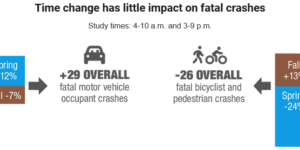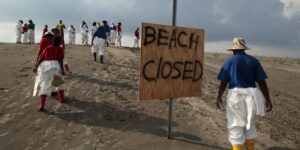The U.S. was hit by a series of severe weather events in March, leading to extensive damage in central and eastern parts of the country and aggregated insurance losses expected to exceed $2.0 billion, according to the latest Global Catastrophe Recap report from Aon Benfield’s Impact Forecasting.
The most prolific event, March 6-10, resulted in major tornado, hail and wind damage in the Plains, Midwest and Southeast. Total economic losses were estimated at $1.7 billion, with insurance losses of $1.2 billion.
Among March’s other catastrophes:
- A powerful Nor’easter brought blizzard-like conditions to the U.S. East Coast, leaving 11 dead and dozens injured. Heavy snow and subfreezing temperatures hit the Midwest, Mid-Atlantic, Northeast and Deep South, causing severe disruption to travel, including more than 7,000 flight cancellations. Preliminary reports in South Carolina and Georgia indicated that crop losses would near $1.0 billion.
- Cyclone Debbie made landfall in Queensland, Australia as a Category 3, killing at least 10 people. Widespread flooding inundated several towns and communities and caused extensive damage to infrastructure and the agricultural sector. Preliminary data from the Insurance Council of Australia cited 35,370 claims filed with an estimated value of $310 million.
- Windstorm Zeus came ashore in France, killing two people and leading to widespread wind damage. Total economic and insured losses were expected to exceed $100 million.
- Heavy rainfall in Peru led to major mudslides and flooding. More than 100 people were killed and over 245,000 homes and structures were damaged or destroyed. Total economic losses were estimated at $3.1 billion.
- Drought conditions worsened in Africa’s Somalia, Ethiopia and Kenya. The United Nations appealed for $1.9 billion in aid as severe food shortages and heavy agricultural damage was reported.
- A magnitude 5.0 earthquake in China’s Yunnan province damaged nearly 45,000 structures, causing total economic losses around $50 million.





















 Allstate’s Safe Driving App Helps Reduce Chance of Collision by 25%
Allstate’s Safe Driving App Helps Reduce Chance of Collision by 25%  USAA to Lay Off 220 Employees
USAA to Lay Off 220 Employees  Uncertainty Keeps Prices Up; No Prior-Year Loss Development: Travelers
Uncertainty Keeps Prices Up; No Prior-Year Loss Development: Travelers 



